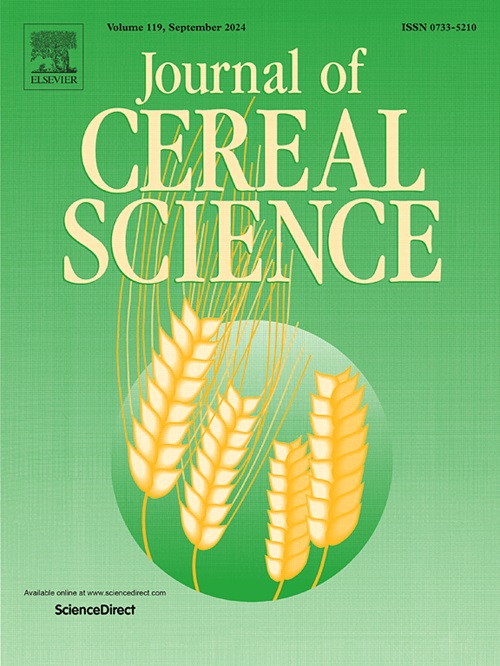Microwave drying of sprouted little millet and assessment of their kinetic and physiochemical properties
IF 3.9
2区 农林科学
Q2 FOOD SCIENCE & TECHNOLOGY
引用次数: 0
Abstract
In the present study, little millets were germinated at 30 °C with a relative humidity of 90% for 72 h. The sprouted little millets were dried in a power-controlled microwave (MW) system at a temperature of 50 °C at various power levels of 450, 750, and 1050 W. The "Page kinetic model" was found to be the best fit at various power levels. At MW-750 W and MW-1050 W, the rate constant (k) increased by 3.83–6.33 times as compared to MW-450 W. The activation energy for the germinated microwave-dried little millet was found to be 13.13 W/g. Similarly, the antioxidant activity increased by 34.54% at a power level of 1050 W as compared to the native flour (ungerminated). With the increase in the microwave power for drying, the total phenolic content (TPC) and total flavonoid content (TFC) were increased and found to be 364 (mg GAE/100 g) and 214.8 (mg CE/100 g), respectively, at a microwave power level of 1050 W. The TPC and TFC of MW-450 were increased to 15.6% and 2.3%, respectively, as compared to raw millet. However, at MW-1050, the TPC increased to 23.2%, and the TFC rose to 6.5%, compared to raw millet. The percentage crystallinity and enthalpy of melting from differential scanning calorimetry (DSC) were found to be the lowest at 12.18% and 107.7 J/g, respectively, at MW-1050. The present study showed that the application of microwaves enhanced the nutritional properties.

发芽小谷子的微波干燥及其动力学和理化性质的评价
在本研究中,小小米在30°C、相对湿度为90%的条件下发芽72 h。发芽的小小米在功率控制微波(MW)系统中干燥,温度为50°C,功率为450、750和1050 W。在各种功率水平下,“Page动力学模型”是最适合的。在MW-750 W和MW-1050 W时,速率常数(k)比MW-450 W增加了3.83 ~ 6.33倍。微波干燥小小米萌发后的活化能为13.13 W/g。当功率为1050 W时,其抗氧化活性较未发芽的天然面粉提高了34.54%。微波功率为1050 W时,随着微波功率的增加,总酚含量(TPC)和总黄酮含量(TFC)增加,分别为364 (mg GAE/100 g)和214.8 (mg CE/100 g)。与生谷子相比,MW-450的TPC和TFC分别提高到15.6%和2.3%。然而,与生小米相比,在MW-1050时,TPC增加到23.2%,TFC增加到6.5%。差示扫描量热法(DSC)发现,在MW-1050时,结晶度和熔化焓分别为12.18%和107.7 J/g,最低。本研究表明,微波的应用提高了其营养特性。
本文章由计算机程序翻译,如有差异,请以英文原文为准。
求助全文
约1分钟内获得全文
求助全文
来源期刊

Journal of Cereal Science
工程技术-食品科技
CiteScore
7.80
自引率
2.60%
发文量
163
审稿时长
38 days
期刊介绍:
The Journal of Cereal Science was established in 1983 to provide an International forum for the publication of original research papers of high standing covering all aspects of cereal science related to the functional and nutritional quality of cereal grains (true cereals - members of the Poaceae family and starchy pseudocereals - members of the Amaranthaceae, Chenopodiaceae and Polygonaceae families) and their products, in relation to the cereals used. The journal also publishes concise and critical review articles appraising the status and future directions of specific areas of cereal science and short communications that present news of important advances in research. The journal aims at topicality and at providing comprehensive coverage of progress in the field.
 求助内容:
求助内容: 应助结果提醒方式:
应助结果提醒方式:


